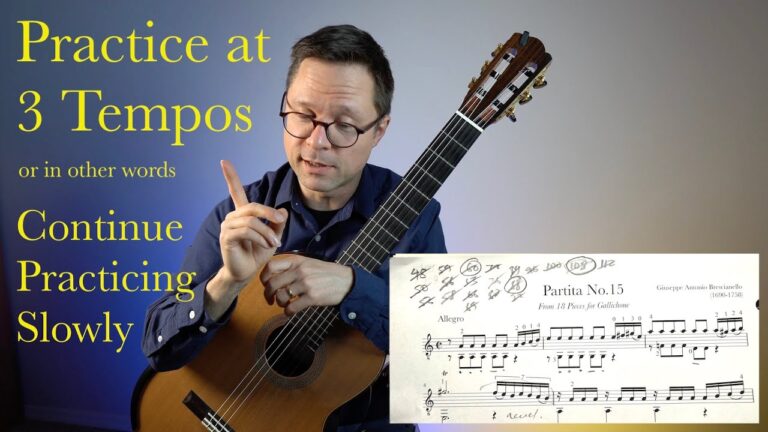This lesson comes from my new book Classical Guitar Repertoire Lessons Grade 3 – Seven pieces at the grade three level with dedicated lessons preparing you for each piece.
Lección No. 86 by Julio Sagreras (1879–1942) – YouTube Video Lesson Link – In some ways this piece is more difficult than grade 3 but if approached with care and patience it can be an excellent barre study and left hand skill builder. Without clear position changes and knowledge of the shapes, it will be difficult to navigate the chords while making the melody sing. Therefore, we will study the piece in three ways to become familiar with everything you need to know. Don’t get frustrated, instead, take it slow, stay organized, and give it time to settle into the hands. I’ve taught this piece many times and the first few weeks give students trouble, but if they take it slow it comes together and much is learned. The next grade will include pieces such as Lagrima by Tarrega so this is a good position and barre preparation for the future.
Practice in three ways – Although when you play the actual piece you will place the notes as they occur, it is helpful to organize your movements in various ways to solidify the pros and cons of each method and to learn different types of muscle memory.
- Play the melody on its own.
- Play the block chords (all the notes within a quarter note beat). This step will teach your left hand the overall chord shapes in the piece.
- Play the melody + bass followed by the accompaniment chord – This step will teach you to play legato from one beat to the next without disruption between each chord. It might seem redundant to write out the whole piece as I have below, but I have found that many students have difficulty with score reductions while practicing. This is similar to the last chord exercise but puts an emphasis on connecting the melody in a legato fashion. Do not place the entire chord all at once. Place your fingers on the notes as they appear on eighth notes beats: melody and bass note first, followed by the accompaniment. The measures with barres will be the exception when the first melody note is part of the barre. When you play the actual piece you should place your fingers one sixteenth note beat at a time.




